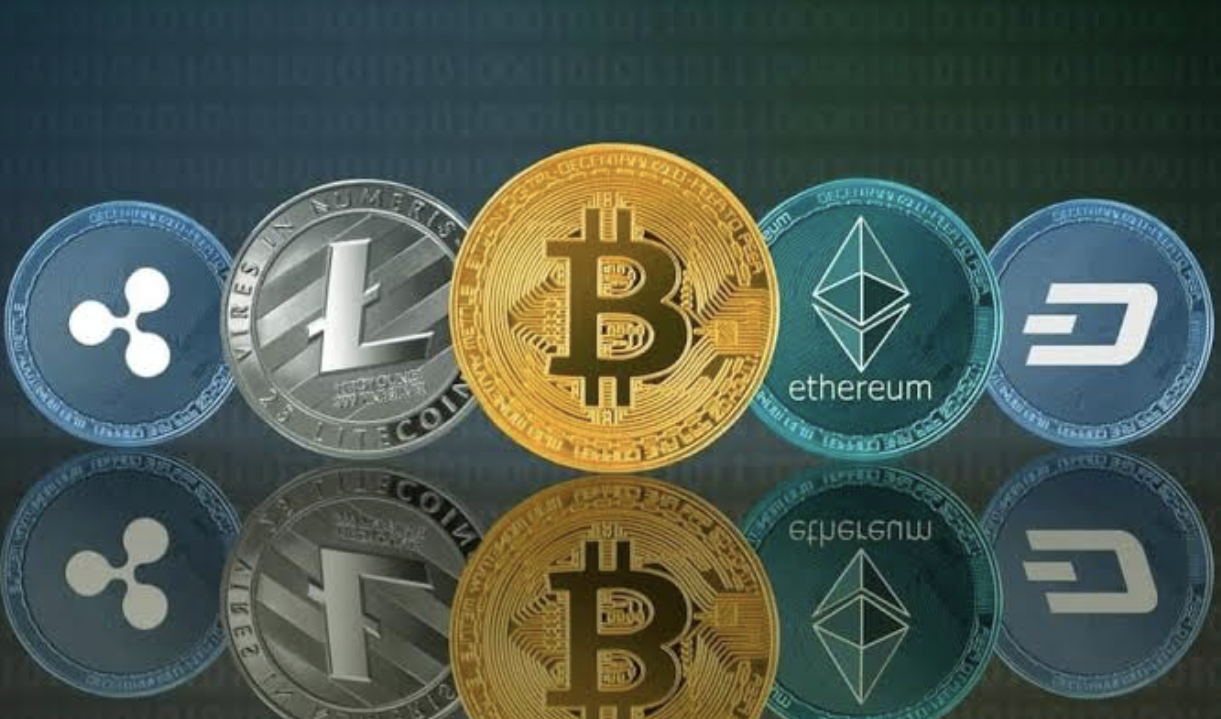Meme coins that were released in the wake of the meme coin mania went up by as much as 30,000% within a short span of time. While beginners mistook it for demand, veterans knew that low liquidity was the primary driving force behind those pumps.
Low liquidity gives way to a volatile market, which explains the current state of the crypto space. But what is liquidity, and what is its importance? What are the factors behind the liquidity crisis, and what should an investor do to deal with it? This guide will highlight all aspects surrounding liquidity.
What Is Liquidity?
Liquidity is a term in finance that refers to the easiness at which an asset can be traded without impacting its price significantly. Liquid assets can be bought and sold easily, but illiquid assets, whose value can be impacted due to trading, take time.

Take a gold bar and a rare basketball card, for instance. Both can have the same value, but their liquidity will be different. It is because finding a buyer for a gold bar is easier than finding a buyer for a rare basketball card.
While the gold bar seller has access to a large pool of buyers, the seller of a football card may struggle to get one. If it takes longer, the football card seller might be prompted to sell the asset at a low cost. This simply means that the lack of buyers has depreciated the value of that asset.
With liquid assets, users have access to financial stability. The price of those assets may change, but the change is not always erratic. There is an element of linearity to them, which keeps the owners of these assets financially flexible.
Read on as we dive deeper into the importance of liquidity.
Importance Of Liquidity
Being liquid is crucial for financial planning. Furthermore, it offers the following benefits:
It offers A Fair Valuation For An Asset
When an asset is liquid, the price discovery process is enhanced due to a constant inflow of trades and information. As we provided in the example above, gold, being a liquid asset, is never at a loss because the seller will easily find buyers for it. The interaction between buyers and sellers is constant. This ensures that the price of the asset remains fair – for the buyer and for the seller.
It Contributes To The Market’s Stability
Liquidity ensures that the market remains stable even after a large quantity of the prevailing assets is sold off. A stable market keeps an asset’s price graph relatively stable, preventing price manipulation. And if one does attempt to alter the pricing conditions, the distortion in the asset’s price chart makes the manipulation apparent to the larger community.
Transactions Are Simplified
Holders do not always encounter any barriers while attempting to convert their liquid assets into cash. The lack of any major impact on the overall value of the prevailing asset makes transactions simplified. And when transactions are simplified, people are prompted to do more of them. This creates a constant flow of transaction activity around an asset, further keeping the market stable.
What Is Liquidity In Crypto?
Within the realm of crypto, liquidity is referred to as the ease at which one can buy and sell a crypto asset without significantly impacting its value. Liquidity levels indicate the number of buyers and sellers that are readily available for an asset. If the market is deep, and there are a lot of buyers/sellers, the crypto market is considered to be healthy.
Currently, Bitcoin stands as the most liquid cryptocurrency in the market. Currently valued at more than $34k, a single transaction won’t negatively impact the overall price of Bitcoin.
Check our guide on Bitcoin Price and Future Prediction to know more.
However, there are certain low-cap assets, such as assets released in the wake of the recent meme coin mania, that don’t have high liquidity. These assets have high levels of volatility, and their prices can be manipulated easily.
Many recently released tokens, such as Elon Musk ($MUSK) and others that have been released on DEXTools, had low liquidity of just above $100k. These assets saw massive pumps within a short span of time and now show no action.
Nevertheless, there are still some meme coins with fair liquidity. For further details, check our guide on the best meme coins to buy now.
Factors That Impact The Liquidity Of A Crypto Asset
There are three major factors that impact an asset’s liquidity:
Acceptance
The liquidity of a crypto asset relies heavily on its adoption rate. How many people have been using the asset for their daily transactions? Are vendors and merchants supporting it as a medium of payment? Does the crypto asset have a special utility that gives it more value rather than just being an investment instrument?
These are just some of the questions that are looked into when we are discussing the acceptance rate for cryptocurrencies. Any crypto asset with vast utility will surely enjoy better liquidity.
See our list to discover some of the best utility cryptos of 2024.
Regulations
People’s receptiveness towards crypto assets largely depends on existing financial regulations in their various jurisdictions. For instance, the SEC’s recent move to turn 68 crypto assets into securities compelled many cryptocurrency exchanges to delist high-cap cryptocurrencies like Solana, Cardano, and Polygon. This move impacted the liquidity of those assets.
Likewise, there are countries that have banned the sale of cryptocurrency assets – and even banned certain cryptocurrency exchanges. Crypto enthusiasts in these countries have to resort to P2P trading to buy crypto assets.
Number Of Cryptocurrency Exchanges
There is a reason why developers usually rush to list their newly launched cryptocurrencies on numerous CEXs. Certainly, assets that witnessed great participation in their presales often get the attention of prominent exchanges easily.
Meanwhile, the availability of an asset on multiple exchanges means the asset is exposed to multiple buyers and sellers, which augments that asset’s liquidity.
Check our guide to discover the best crypto presales in 2024.
What Is DeFi Liquidity?
In decentralized finance, liquidity is referred to the ease at which one cryptocurrency can be swapped for another. If the liquidity is low, holders will have a hard time selling their assets. That is why many DeFi market makers employ multiple liquidity pools.
Without liquidity, the DeFi ecosystem would have a hard time existing. Low liquidity leads to slippage and volatility. That said, since liquidity issues are expected on most decentralized exchanges, most DEXs have a specified slippage tolerance – which often lies around the 5% mark.
Another thing to note is that slippage can sometimes go in favor of the trader as well.
Nonetheless, we recommend that you check out our list of the best DeFi cryptos to buy.
What Are Liquidity Pools?
Liquidity pools lie at the core of decentralized finance. Designed to provide a constant flow of liquidity in a decentralized exchange, these pools incentivize users to add liquidity. Investors add to the liquidity pools and, in return, get access to a portion of the transaction fee in terms of Annual Percentage Yield (APY).
Liquidity Providers And Mining In DeFi
Investors who add liquidity to the pool are referred to as LPs or liquidity providers. Their job is to keep the flow of funds running for the pools so as to keep the centralized exchange afloat. And in return, these providers are given rewards in the form of APYs.
The act of getting incentives by providing liquidity to a pool is referred to as liquidity mining or yield farming.
Crypto Liquidity Crisis And Its Impact on Investors
A crypto liquidity crisis refers to the lack of crypto assets that can be converted into cash. Under adverse circumstances, cryptocurrency exchanges usually experience liquidity issues, which can spell doom for investors.

Here are the core reasons behind an exchange’s liquidity issues.
Low Liquid Resources
The first reason behind the liquidity crisis is the lack of liquid resources. In such circumstances, exchanges can decide to freeze investors’ assets, disallowing them from withdrawing their assets. Crypto loan providers like Celsius and Vauld recently experienced these issues and thus froze users’ assets.
Institutions Drawing From Their Own Financial Reserves
FTX’s downfall was revealed when it came to light that it withdrew investors’ funds – the one it was not supposed to touch, by the way – to keep Alameda Research afloat. It used its native crypto – FTT – to take short-term credit from multiple financial institutions.
As it came to light that FTX was about to go under, the FTT sell-off began, which pushed the value of the token further down.
Such cases are not rare, and they can drive the liquidity of an asset down.
Tips To Manage Liquidity Crisis
Here are some tips for managing a liquidity crisis:
Focus On Researching
Investors must do thorough research on a crypto asset platform. They must go to these platforms’ settings or refer to reviews to learn about their liquidity metrics, such as order book depth, trading volume, bid-ask spread, and slippage.
Spread Out Your Holdings
All crypto assets must not be put inside a single exchange. Investors must stow away some of their crypto holdings on decentralized exchanges and peer-to-peer platforms.
Patience
The current volatility creates an ecosystem for FUD, pushing investors to sell quickly when they see some distortions in an asset’s price. We recommend that investors must be patient and watch the market for a little longer before making any decision.
Choose Reputable Platforms
It is critical that investors choose platforms that have established a good reputation in the market. Such institutions have failsafes in place, such as insurance and other services, to deal with most liquidity issues that may arise.
For more tips, read our guide on how to buy cryptocurrency safely this year.
Conclusion
In this guide, we have provided a comprehensive definition of liquidity in relation to crypto, traditional finance, and DeFi. We have also analyzed the factors that cause liquidity crises, and how they can be avoided.
The current crypto market is volatile, and low liquidity is the primary reason. Therefore, we recommend exercising caution whenever trading crypto. Do thorough research on the assets to buy and the exchanges to buy them from.
For beginners, we recommend eToro. This crypto broker is regulated and gives users a simple way to buy and sell crypto assets.
FAQs
What is liquidity in crypto?
Liquidity refers to the ease at which one can buy and sell cryptocurrency without having any significant impact on value of that asset.
Is high liquidity good or bad for crypto?
Low liquidity indicates that the crypto market is unstable, which generally leads to increase in the BTC price. At higher liquidity, however, the price changes are less pronounced. And when changes are low, the market is stabilized.
What is a good liquidity ratio in crypto
For the current ratio, a good range lies between 1.5 and 3.0, with 2:1 as the target. If the current ratio is above 3:1, it means that the assets are sitting idle.








